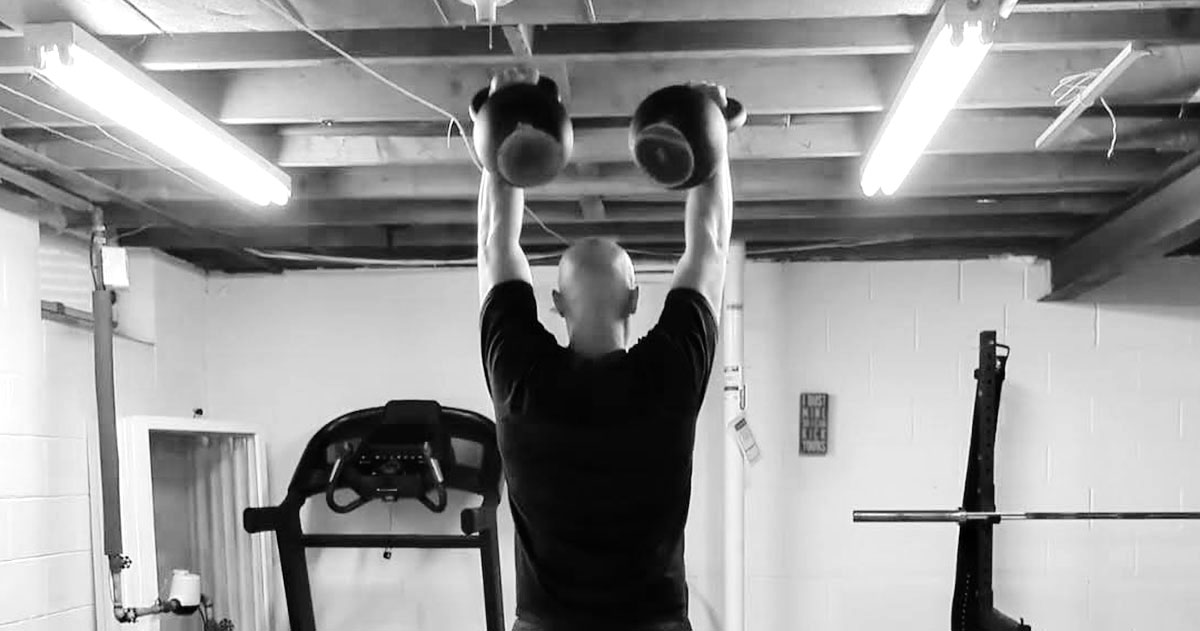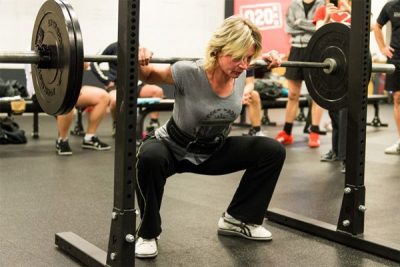
Background
In part one, the concept of Novocaine Training and some of the specifics of exercise selection and session details were explained. The concept is to include enough variation to avoid accommodation, yet not so random that long-term improvement does not occur. The specifics of the program are constantly evolving but the concept remains the same: establish a short list of sessions based on your individual needs and then just like Novocaine, give it time, it always works. The process of choosing the specifics to create your individual template is a decision-making process that should prioritize the why before determining the how.
Macrocycle “Strategic” Decisions
The first step is to be honest with yourself and identify the mission accurately. It is important to not fantasize about training something you are good at in hopes it will improve the things you are not good at just to protect your ego.
When tactical athletes take physical fitness tests, they land on a spectrum of strong to fast. Perhaps they are strong and score higher on the strength portions of the test or they are fast and score higher on the endurance events. The spectrum can be roughly divided into the following categories:
- Fail an endurance event (i.e., 1.5 miles, 2 miles, 3 miles)
- Pass endurance event(s) but score higher on strength event(s)
- Pass strength event(s) but score higher on endurance event(s)
- Fail a strength event (i.e., max pushups)
The original Novocaine template pairs categories 1 and 2 together, as well as categories 3 and 4. However, these categories can also be supplemented. The supplementation can be modified to better address the tactical athlete by alternating the supplementation rather than stacking them. Additionally, when able to train with a very high frequency or a high enough intensity it can be important to increase low intensity steady state (LISS), which is covered more in the microcycle decisions section. In the table below, the supplementation is categorized by priority correlated with the category of athlete to better manage session duration and volume as an athlete’s minimum dose and maximum volume change.
- Category 1: Base + Endurance
- Category 2: Base + Endurance priority with strength auxiliary
- Category 3: Base + Strength priority with endurance auxiliary
- Category 4: Base + Strength

The three sessions (A, B, and C) selected for the athlete should align to the needs of the athlete. Anatoliy Bondarchuck, one of the most successful coaches of all time, used a similar training method to Novocaine by having athletes repeat the same sessions until reaching top form before changing. In every block of training, each of Bondarchuck’s athletes had exercises suited to the athlete’s needs designed to identify which sessions, base and supplemental, should be used based on the individual. To incorporate the ideas of Bondarchuck further, priority A sessions should generally be preparatory, B sessions should be special preparatory, and C sessions should be special developmental in nature.
Mesocycle “Tactical” Decisions
Over time, we want to lift heavier weights, lift them more, or lift them faster. For endurance, we want to go farther or faster. The big lesson is to not rush the process and avoid the pitfall of progressing too soon. Sticking with a volume and intensity for too long has more reward than risk. The opposite is not true. Letting the ego get involved can help achieve potential but also comes with the risk of overtraining, injury, or other setbacks.
Finding a progression that fits within your individual minimum effective dose and maximum adaptable volume is the most important element to long-term progress. Progressions below your minimum effective dose will be a waste of time. Progressions above your maximum adaptable volume are a waste of effort.
Unlike Bondarchuck, discussed above, many successful programs increase volume or intensity over a few microcycles. At some point, most seem to settle on a form of wave cycling. The length of the wave and whether they are steps or linear depends on the athlete, but the big takeaway is that waves work, and they work for a long time.

Tudor Bompa, in Periodization Training for Sports,1 recommends flat-step cycles for in-season athletes. Flat-step cycles can work for almost everyone, but the size of the step is dependent on the abilities of the athlete. The longer the step, the bigger it can be. A more advanced athlete will need longer and shorter steps than the novice athlete. Choosing the progression cycle that suits the athlete takes some experimentation but being honest about constraints and not letting the ego influence decisions will go a long way in identifying a progression cycle that suits the athlete.
A simple method of progression for base sessions is to identify a low, medium, and high volume and cycle through them before increasing intensity. For example, in the 10×10 template for an S&S session, I use 6 sets as a low volume, 8 sets as a medium volume, and 10 sets as a high volume.
Identifying a low, medium, and high stress for supplementation works well also. Attempt to align the low with a minimum effective intensity and volume and high with maximum adaptable intensity and volume. Start with a step mesocycle and then proceed with flat-step mesocycles.

Microcycle “Operational” Decisions
The original Novocaine base template was seven sessions that incorporated four aerobic focused sessions, two strength focused sessions, and one anaerobic conditioning session. The updated template(s) go a step in either direction. However, aligning supplementation with the kettlebell sessions in all the templates has remained unchanged.

A modified 10-day microcycle is intended for those that are achieving high enough intensity and or frequency to require additional LISS sessions to allow fatigue to dissipate. When the intensity is nearer one’s potential, the volume load required for improvement is high enough to require more rest between high intensity training sessions.
A modified 4-day microcycle should be used when time and recovery resources are limited. Because the frequency of the 4-day microcycle is low, each session likely needs to have more volume or supplementation. At least one day should be taken off between each of the sessions of the 4-day microcycle.

Session Decisions
President Dwight D. Eisenhower once said, “In preparing for battle, I have always found that plans are useless, but planning is indispensable.” No matter how well the higher-level decisions are made, success comes from proper execution. As such, session decisions revolve around proper execution.
The most impactful decision is whether a session should even be performed or not. More and more technology companies are developing ways to monitor readiness to train. When it comes to one of the kettlebell/supplement days, it is important to have the energy and ability to train with enough intensity to impart the desired adaptation stimulus. It is better to take the day off and recover if the desire or ability to train intensely on these days is not achievable. The LISS sessions can often be done regardless and, if not too long, promote recovery.

The execution details of the training are of second importance. Every training session should be performed with the intent of stimulating an adaptation. Not achieving a desired adaptation is a waste of time and recovery. If training is going to be performed, it should be performed well. The good news is that there can be quite a bit of wiggle room in the adaptive process. Decisions such as exercise selection, load selection, set duration, rest, and session volume all play a role in the adaptive process and will be somewhat unique to each athlete.
The last decision to make is when to terminate or extend a session. Usually, extending a session is unnecessary. It is far less risky to end up having a less fatiguing day and training again the next day than a more fatiguing day and having to miss an entire future session. However, ending a session early can protect the integrity of the whole program. The stop signs provided in AXE are excellent for those sessions and identifying specific fatigue stop criteria appropriate for each of the sessions is important. The biggest stop sign is when the intent of the session is unable to be met. Not hitting a high enough power output, pace, velocity, heart rate, etc. If for some reason, the objective of the day is not being trained, there is no purpose in training.
After Action Review
Just like a mission, the process starts with a why and then figures out the how. Start at the 30,000-foot view and zoom in. Start with mesocycle decisions, then filter down through macrocycle, microcycle, and session decisions to best suit the individual needs and constraints. Lastly, show up, train, and, just like Novocaine, give it time, it always works.
References
1Bompa, Tudor O. Periodization Training for Sports, 3rd Edition. Human Kinetics, 2015








